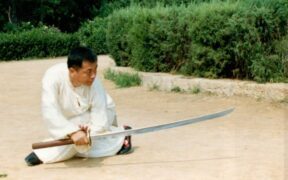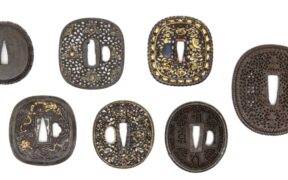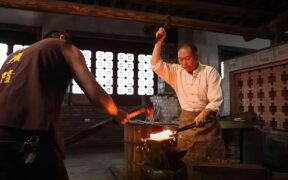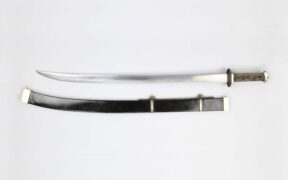Our content features commercial links to our products, committed to transparent, unbiased, and informed editorial recommendations. Learn More
Examining the Liuyedao Sword’s Characteristics and History
NO AI USED This Article has been written and edited by our team with no help of the AI
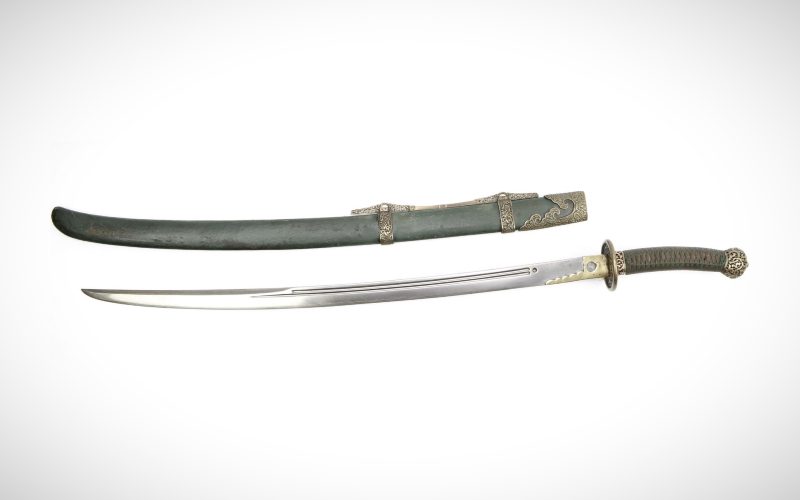
The Liuyedao is a traditional Chinese sword, also called the Willow Leaf Saber. This sword replaced the role of the Jian and was heavily used in both the Chinese infantry and cavalry.
In this article, we will talk about the Liuyedao sword and its most recognizable characteristics. We will explain how it was used in the past and how it is best used today. Then we will look at its terminology and history.
Terminology of the Liuyedao

The Liuyedao directly translates to mean Willow Leaf Sabre. This is because the sword has a slight curve while the handle is either straight or slightly curved.
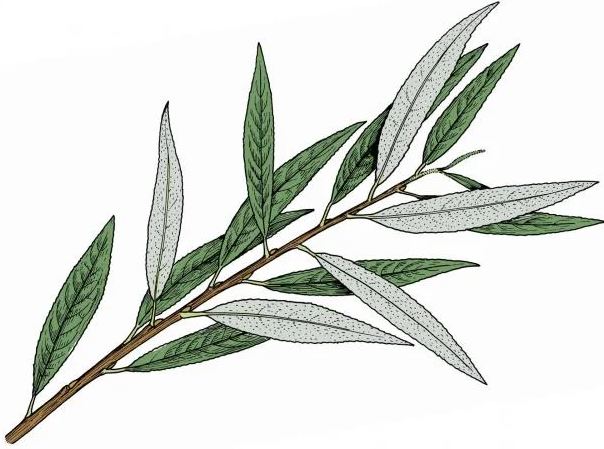
The Liuyedao sword is also sometimes called by the modern term Miaodao, which means “sprout saber” because the shape of the blade looks like a sprout. Today, this name is confusing because most curved Chinese swords are called Miaodao, which is incorrect.
Characteristics of the Liuyedao Sword
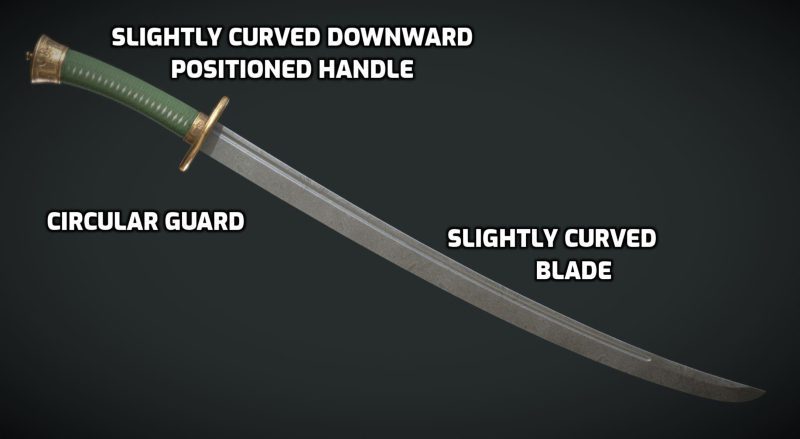
The Liuyedao has a distinct look, and its characteristics make it a very versatile weapon. This military sidearm Dao sword looks very elegant and is most commonly used as a one-handed sword.
Blade
The blade of the Liuyedao is not very long. It is one-edged, meaning it can slash only from one side. The edge at the tip of the sword is very sharp, and because of the curve, it can be used as a deadly striking tool. The point of balance is under the guard.
This blade may have a spherical pipe or back edge, sometimes even two, making the sword very light, much more practical and easier to use. The Liuyedao’s blade is made of steel or sometimes iron. The total blade length is 27 to 29 inches / 70 to 75 cm.
One type of Liuyedao sword has a blade with prominent ridges (qi) on both sides and a cross-section that looks like a Japanese katana.
Guard
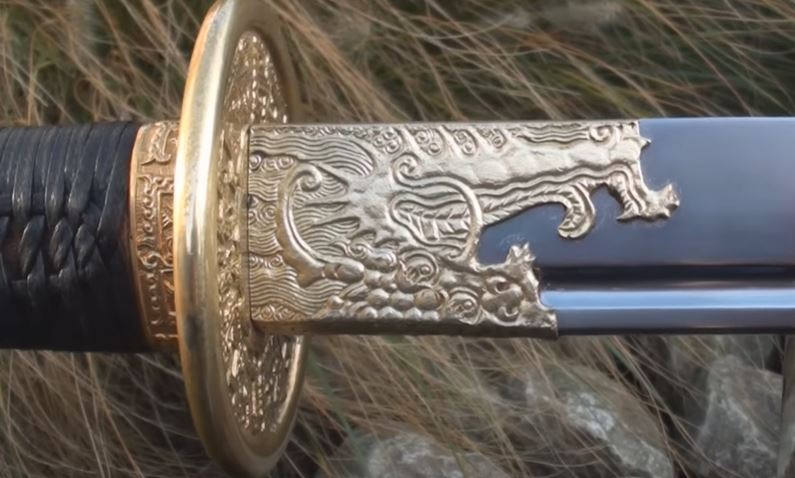
The Liuyedao sword has the same circular guard as many other Chinese Dao swords. This design is taken directly from the Japanese style of crafting to make it faster. The guard isn’t very big but can protect the user’s hands and fingers.
The tunkou can be noticed on the Liuyedao’s guard. This is the decorated collar added to the neck of the sword (right on top of the guard). It doesn’t add anything in terms of performance but is just an accessory for show.
Handle
The handle of the Liuyedao sword can be made out of polished wood, but it is usually wrapped to offer a much better grip. The handle length is about 7.8 inches / 20 cm long, and it is mostly used for one-handed slashes. However, it can also be used two-handed if held underneath the pommel.
The pommel and the top of the handle usually have fittings and decorations with some traditional Chinese symbols like dragons, tigers, clouds, etc.
Scabbard
Since it is a military sidearm for the cavalry, the Liuyedao is often inside its scabbard. This accounts for the many fittings, especially at the beginning of the scabbard, which can consist of any type of Chinese symbol and include possible engravings from the creator.
The material is usually made of wood which can be wrapped with ray skin. It is made very light so that the user can carry it around daily.
Length and Size

The overall length of the Liuyedao sword is 37 to 39 inches / 0.9 to 1 meter. So it isn’t as long as the other types of Chinese swords but just long enough to be used one-handed with sufficient precision and speed.
Weight
The total weight of this sword is 2 to 3 lbs / 0.9 to 1.3kg. This light sword is a little heavier than the Chinese Jian sword, which the Liuyedao eventually replaced. Its light weight enables users to do many strikes in various positions.
Curvature
The Liuyedao sword has a curvature that extends most of its length. It is a saber and is shaped with the same curvature as the saber Dao sword. This curved blade is capable of deadly slashing strikes while thrusting and stabbing with the edge.
The original handle of the Liuyedao was straight. Around the 18-19th century, the sword started to have a more downward-positioned handle. This is also what the modern Liuyedao handle looks like today.
History of the Liuyedao Sword

The Liuyedao originated during the Ming and Qing dynasties of China when curved blades were increasingly used, mainly because of the cavalry. The Liuyedao was slowly but steadily replacing the Jian, the typical double-edged Chinese sword.
During the last decades of the Chinese empire, this kind of weapon was very common for military officers. The Liuyedao looks very similar to western military swords from the same period – slightly curved and not very long so that the cavalry could use it.
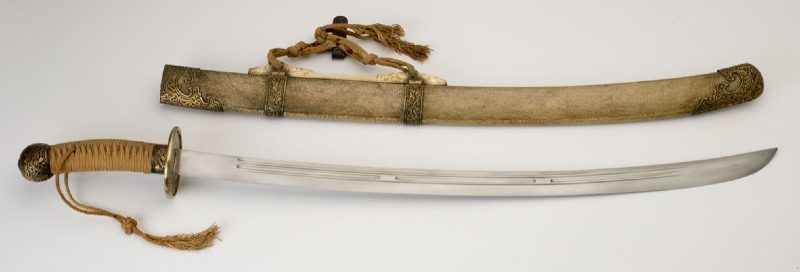
Some say that general Qi Juguang created this sword. He is well-known for his battles against the Wohau (pirates on the east coast of China) and the Mongol invaders.
This sword demonstrates how the outside world in the Middle Ages influenced China. The curved blade is based on Islamic and Mongol saber designs, and the round guard is a copy of the Japanese katana.
